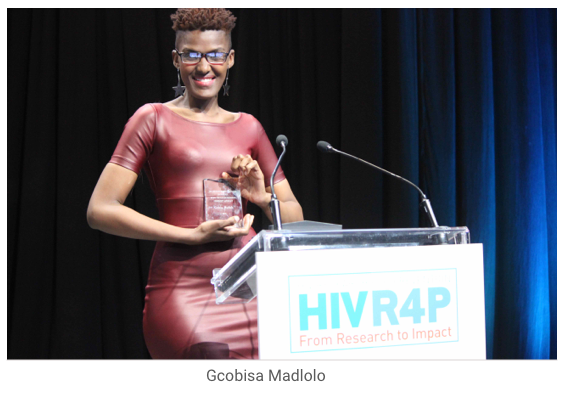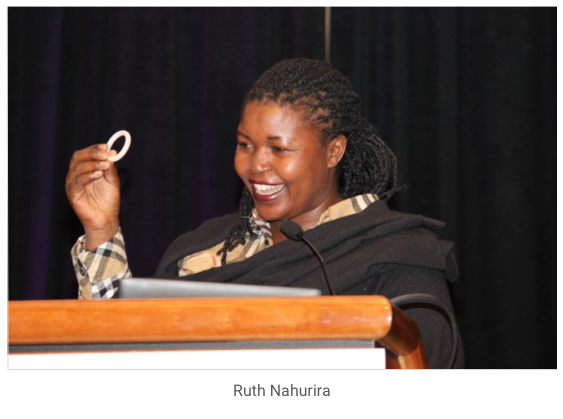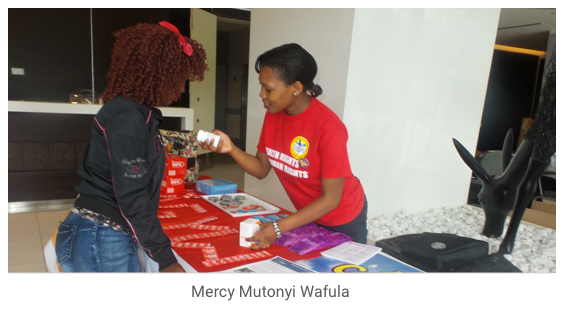This post originally appeared on FHI 360’s Research for Evidence blog.
Good Participatory Practice (GPP) has become a central part of biomedical HIV prevention research over the past 10 years. Developed in response to global controversies that disrupted the first trials seeking to test whether antiretroviral drugs could prevent the sexual transmission of HIV, GPP provides a framework for researchers working amid historically-based concerns about exploitation and within the pervasive social, economic and political inequalities that travel with the HIV pandemic. GPP guidelines are built on a broader movement toward partnerships between health researchers and sponsors on the one hand, and patients, communities and advocates on the other.
Doing participatory research well requires expertise, resources and time. It is also an approach where everyone learns mainly by doing, whether they are researchers, funders, patients or advocates. It is challenging to evaluate principled, action-based approaches. But without thoughtful evaluation we may end up investing in well-intended practices that align poorly with desired long-term outcomes or miss opportunities to innovate for greater impact.
To highlight the accumulating evidence on how engagement and participatory practices have been applied, and with what results for HIV prevention, I recently collaborated with Judy Auerbach (UCSF) to guest edit a special supplement of the Journal of the International AIDS Society (JIAS), on “Science, theory, and practice of engaged research: Good Participatory Practice and beyond.” The supplement was released in conjunction with the HIV Research for Prevention (HIVR4P) conference held in Madrid in October 2018. Here I highlight three articles from the supplement.
Theory: Ethics review to strengthen engagement
While there is considerable overlap between the goals of GPP and those of research ethics review, they are nonetheless distinct and complementary processes. Ethics review is a largely regulatory process that establishes standards and formalizes accountability, as a way of ensuring that people recruited and enrolled into research are treated with respect, provided optimal benefits while subject to minimal harm, and with fair and equal distribution of both the benefits and risks of participation. In the context of HIV prevention, research participants, community members and other stakeholders may be at risk of harm due to the potential for social marginalization, stigma and discrimination. This could result from intentional exploitation, or from well-intentioned but poorly informed actions by researchers.
GPP, and stakeholder engagement more broadly, centers on fostering collaboration among researchers, the people engaged in the research and the communities impacted by the research. This is quite different than the protectionist framework of most research ethics guidelines. It carries a risk that the trust built with participants and communities could be exploited – as happened with the infamous 40-year CDC study of syphilis in a poor Black area of Tuskegee, Alabama. But it also carries the potential to transform clinical research through increased innovation, better implementation and broader benefits for participants and communities.
Given these tensions, Catherine Slack and colleagues at the HIV AIDS Vaccines Ethics Group (HAVEG) at the University of KwaZulu-Natal in South Africa ask whether stakeholder engagement is a legitimate component of ethics review, and, if so, what core features and practices of engagement should be included in that review.
In their article, “Strengthening stakeholder engagement through ethics review in biomedical HIV prevention trials: Opportunities and complexities,” Slack, et al. note that multiple guidelines direct research ethics committees to consider community participation and engagement as part of their review of HIV prevention research. According to the authors, the key features that committees should consider are whether the engagement is broad and inclusive, early and sustained, and responsive and dynamic. When reviewing practices, committees should consider if researchers appropriately evaluate the local context, put their engagement plans into writing, and adequately resource the plans.
In their discussion, Slack, et al. stress that if research ethics committees find that “planned engagement does not meet ethics recommendations, they should not recommend rejection of a protocol but rather make constructive recommendations for improvement so plans resonate better with ethics guidance” (p. 23). The authors advocate against requiring protocol amendments, emphasizing instead “rapid engagement responses” with notification to the committee as appropriate. If overly rigid, ethics committees with limited understanding of community dynamics could constrain researchers from addressing emergent crises in ways that minimize harm and maximize benefit.
This topic is the focus of a new online course to be released by the AIDS Vaccine Advocacy Coalition (AVAC) in partnership with HAVEG. The course takes a “guidance-grounded” approach – highlighting how ethics guidelines actively encourage research ethics committees to review engagement, and foregrounding the features and practices of engagement valued in ethics guidance. The course will be available in January 2019 on engage.avac.org.
Practice: Implementing GPP across multiple trials, multiple sites
GPP guidance documents stress the importance of continuous engagement with communities and stakeholders throughout all stages of the clinical research process, from protocol development through planning implementation of clinical trials to post-trial dissemination of results and access to effective interventions and treatments. The documents outline practices and activities that can be undertaken at each step in this kind of timeline for a given trial, in a given setting.
In reality, GPP is rarely so easily packaged and delivered. What happens to the relationships built with communities and stakeholders between the end of one trial and the beginning of the next? How is the timeline managed if the research site is implementing multiple trials with overlapping timelines and participant populations? What if that site is leading the implementation of two or more trials across overlapping sets of research sites in multiple country settings? Researchers at the Wits Reproductive Health and HIV Institute (Wits RHI) in Johannesburg, South Africa, find they needed to address all these challenges.
The Wits RHI studies described by Deborah Baron and colleagues in the special supplement include five studies with implementation start dates ranging from 2011–2015 and end dates from 2014–2020. All studies include multiple sites within South Africa and two also include sites elsewhere in Africa (Kenya, Swaziland, Tanzania and Zambia). In their article, “Collateral benefits: How the practical application of Good Participatory Practice can strengthen HIV research in sub‐Saharan Africa,” Baron, et al. thoughtfully reflect on what did, and did not work for addressing a wide range of challenges.
Through accumulation of experience, capacity building within the organization, and leveraging of funding resources, Wits RHI institutionalized GPP with the aim of establishing the first GPP Centre of Excellence. Baron and colleagues outline recommendations within four key research phases for advancing GPP.
In the planning and readiness phase, Baron, et al. stress the need for commitments to provide human resources, funding, documentation, and monitoring and evaluation of engagement outcomes and impact. During implementation, they stress training, monitoring for quality improvement, and continuous engagement activities. During close-out, research teams need to pro-actively plan for different outcome scenarios, post-trial access, and how dissemination and communications will be supported after the trial ends but results are not yet available. For overall sustainability, the authors advise research teams to develop generic GPP tools, templates and standard operating procedures they adopt across research projects, ensure knowledge and experience are embedded in institutional memory, and to invest in their GPP champions through training and other internal supports.
Beyond GPP: Community mobilization as intervention
If we assume that “the clinic” is the home base for improving health outcomes, we can quickly lose sight of the fact that many of the drivers of those outcomes are powered outside the clinic, in the communities where people live their day-to-day lives. This is especially true when thinking about prevention or chronic health conditions.
Over the years I have often heard health researchers acknowledge the important determining role of social conditions on health but then throw up their hands and say, “What do you want me to do? Cure poverty? Cure prejudice? Find a cure for gender-based violence?” Well, yes.
Of course, it is important to conduct clinical research that targets pathogens and toxic exposures, or that seeks ways to rebuild broken biological systems (e.g., immune, cardiovascular, digestive, nervous). But if social conditions increase the transmission of pathogens and toxins or help break down bodily systems, why not do research that also targets those social conditions? Why try to cure only the part of the problem that can walk into the clinic setting?
The article by Sheri Lippman and colleagues, “Village community mobilization is associated with reduced HIV incidence in young South African women participating in the HPTN 068 study cohort,” draws on data from multiple studies to evaluate the impact of community mobilization on HIV incidence. The authors derived population-level data from an annual census, the Agincourt Health and socio-Demographic Surveillance System (HDSS), undertaken in a rural area in South Africa. The HIV Prevention Trials Network (HPTN) 068 trial – active through 2012 – used a randomized design to see if cash transfers conditional on school attendance could reduce HIV incidence among a cohort of adolescent girls and young women ages 13 to 20 residing in the Agincourt HDSS study area.
During the same time period, a separate community mobilization intervention study centered on the intersection of HIV risk and gender norms was implemented in 11 of 22 randomly selected villages in the Agincourt HDSS area. The community mobilization study was evaluated through baseline and follow-up cross-sectional surveys in Agincourt HDSS villages, including those where HPTN 068 was implemented. The surveys included measures reflective of seven components describing the level of mobilization in each village.
In their analysis of the combined data, Lippman, et al. find that living in a community with higher levels of mobilization is associated with lower HIV incidence among the adolescent girls and young women enrolled in the HPTN 068 cohort. They also find a relationship between specific mobilization components and HIV incidence. The authors state the “overall findings indicate that [adolescent girls and young women] experience reduced HIV infection in villages where residents feel connected, dialogue and address their circumstances, consider HIV an important community issue and have leadership that is present and accountable” (p. 64).
Taken together, the three articles described above from the JIAS special supplement underscore the ethical basis for participatory, engaged research, the growth of collective expertise in and leadership for its implementation, and the potential for transitioning from participatory support from communities and stakeholders for research to mobilization as a key intervention component. It is time to fully situate clinical research as part of the communities where the work takes place.



